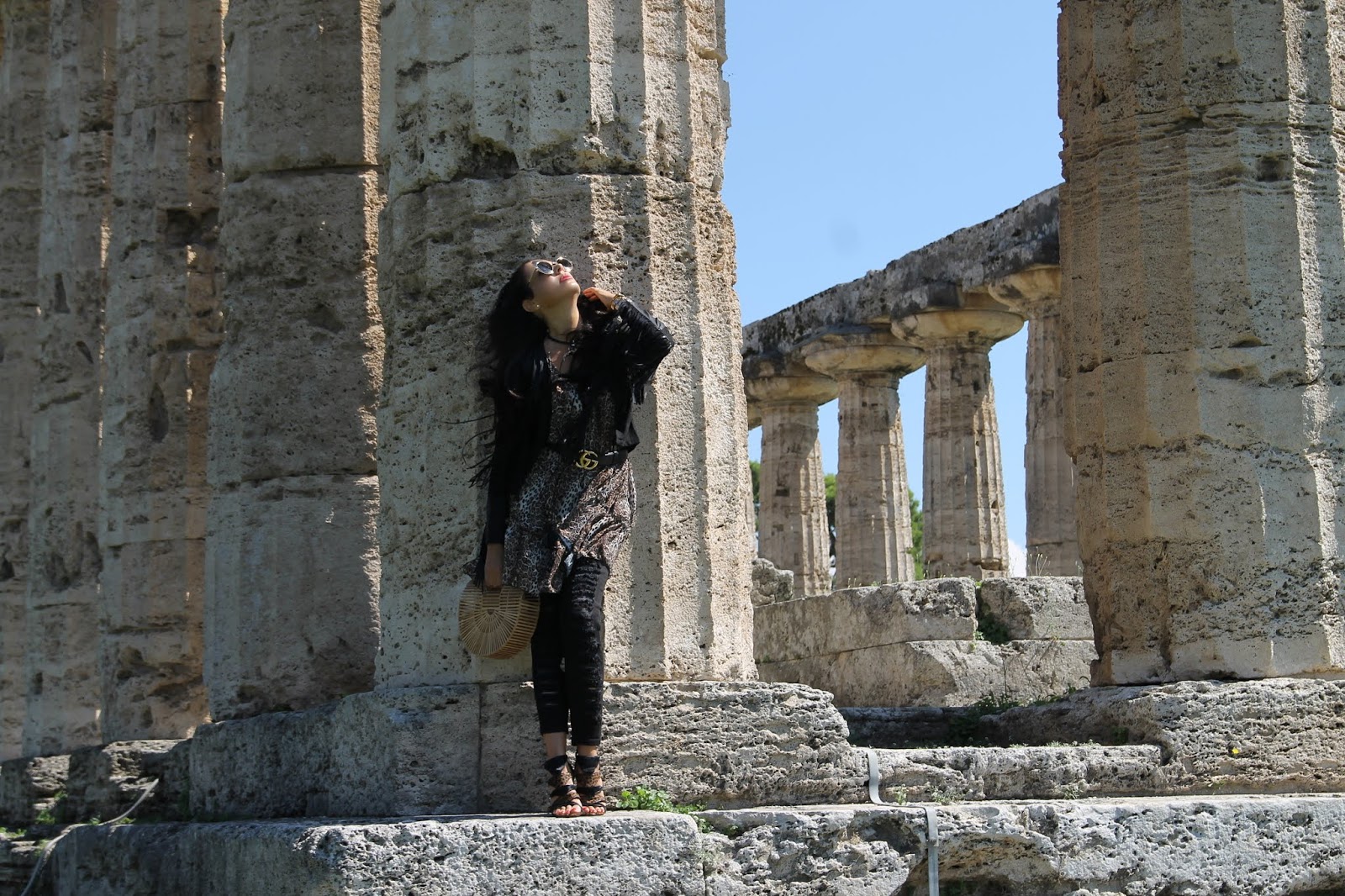
Lungo la porzione più meridionale della fertile pianura del Sele, poco prima che si innalzino i contrafforti montuosi del Cilento, da circa 2600 anni il paesaggio del golfo di Salerno è accompagnato dal solenne profilo dei templi di Paestum, una delle più limpide testimonianze del periodo della Magna Grecia, ed uno dei siti archeologici più importanti dell’intera penisola italiana.
Gli scavi di Paestum sono noti per i loro maestosi templi dorici, sono tre, dedicati a Nettuno, Hera e Cecere ed è incredibile che siano ancora in piedi: meraviglie dell’antichità, che ancora oggi si presentano in un ottimo stato di
conservazione.
conservazione.
La città di Paestum, dopo la sua fondazione da
coloni greci, agli inizi del VI secolo avanti Cristo, con il nome di Poseidonia (greco antico:
Ποσειδωνία) fu conquistata dai Lucani e più tardi dai Romani.
coloni greci, agli inizi del VI secolo avanti Cristo, con il nome di Poseidonia (greco antico:
Ποσειδωνία) fu conquistata dai Lucani e più tardi dai Romani.
I Lucani
la ribattezzarono Paistos, mentre i Romani diedero alla città il suo
nome attuale, a partire dal 273 a.C.
la ribattezzarono Paistos, mentre i Romani diedero alla città il suo
nome attuale, a partire dal 273 a.C.
I tre templi greci furono costruiti tra il VI e il V sec. a.C. e rappresentano,
insieme a quelli di Atene ed Agrigento, gli edifici templari meglio
conservati dall’età classica.
insieme a quelli di Atene ed Agrigento, gli edifici templari meglio
conservati dall’età classica.
Sin dal ‘700 il sito ha attirato
viaggiatori ed artisti come Piranesi e Goethe.
viaggiatori ed artisti come Piranesi e Goethe.
Dal 1998, Paestum è
patrimonio dell’UNESCO.
patrimonio dell’UNESCO.
Entrando e camminando all’interno della poderosa cinta muraria dell’antica Poseidonia,
si avverte la grandezza e la sacralità di queste costruzioni.
si avverte la grandezza e la sacralità di queste costruzioni.
Indosso un mini abito in stampa leopard, sovrapposto ad un paio di jeans vissuti.
Non ho resistito alla fantasia più trendy di stagione, tornata alla ribalta direttamente dai mitici anni ’80, più contemporanea e graffiante che mai, mentre visito un sito affascinante e suggestivo, respirando aria di una secolare magia.
Most of the ancient ruins in Italy you see are, not surprisingly, Roman.
But in southern Italy is something different… and much older: Greek ruins.
The ancient ruins at Paestum are among the only Greek ruins left on Italy’s mainland, and they’re definitely the best-preserved.
(Many more wonderful remnants of ancient Greece can be found on the island of Sicily).
Plus, although you’re probably used to hearing all about men and male deities when it comes to the ancients, this site is a nice example of how that wasn’t exactly the case: All three of Paestum’s major temples were built in honor of female goddesses.
Paestum, also known by its original Greek name as Poseidonia, was a Greek colony founded in 600 B.C
Prospering as a trade center it was conquered first by the Lucanians and then, with the new Latin name of Paestum, the city became an important Roman colony in the 3rd century BCE.
Thanks to the discovery of the archaeological area in the first half of the ‘700’s Paestum attracted the attention of many experts and intellectuals. As a result, it became a popular choice among the tourist destinations of the XVIII and XIX centuries, favoring the development of the region, that today represents one of the most significant tourist destinations of the Magna Graecia, not just for its archaeological gems but also as a holiday resort.
But in southern Italy is something different… and much older: Greek ruins.
The ancient ruins at Paestum are among the only Greek ruins left on Italy’s mainland, and they’re definitely the best-preserved.
(Many more wonderful remnants of ancient Greece can be found on the island of Sicily).
Plus, although you’re probably used to hearing all about men and male deities when it comes to the ancients, this site is a nice example of how that wasn’t exactly the case: All three of Paestum’s major temples were built in honor of female goddesses.
Paestum, also known by its original Greek name as Poseidonia, was a Greek colony founded in 600 B.C
Prospering as a trade center it was conquered first by the Lucanians and then, with the new Latin name of Paestum, the city became an important Roman colony in the 3rd century BCE.
Thanks to the discovery of the archaeological area in the first half of the ‘700’s Paestum attracted the attention of many experts and intellectuals. As a result, it became a popular choice among the tourist destinations of the XVIII and XIX centuries, favoring the development of the region, that today represents one of the most significant tourist destinations of the Magna Graecia, not just for its archaeological gems but also as a holiday resort.
Entering and
walking inside the impressive city walls of ancient Poseidonia, you can feel
the greatness and sacredness of these Greek temples.
I’m wearing a leopard print mini dress with a pair of distressed jeans.
walking inside the impressive city walls of ancient Poseidonia, you can feel
the greatness and sacredness of these Greek temples.
I’m wearing a leopard print mini dress with a pair of distressed jeans.
Fall 2018’s biggest fashion trend is animal print, back in vogue straight from the legendary ’80s, with a bold new twist and more roaring
than ever, I’m wearing it while visit a fascinating and evocative site, breathing
the air of an ancient magic.
than ever, I’m wearing it while visit a fascinating and evocative site, breathing
the air of an ancient magic.
Location: Ancient Greek Temples – Paestum – Italy
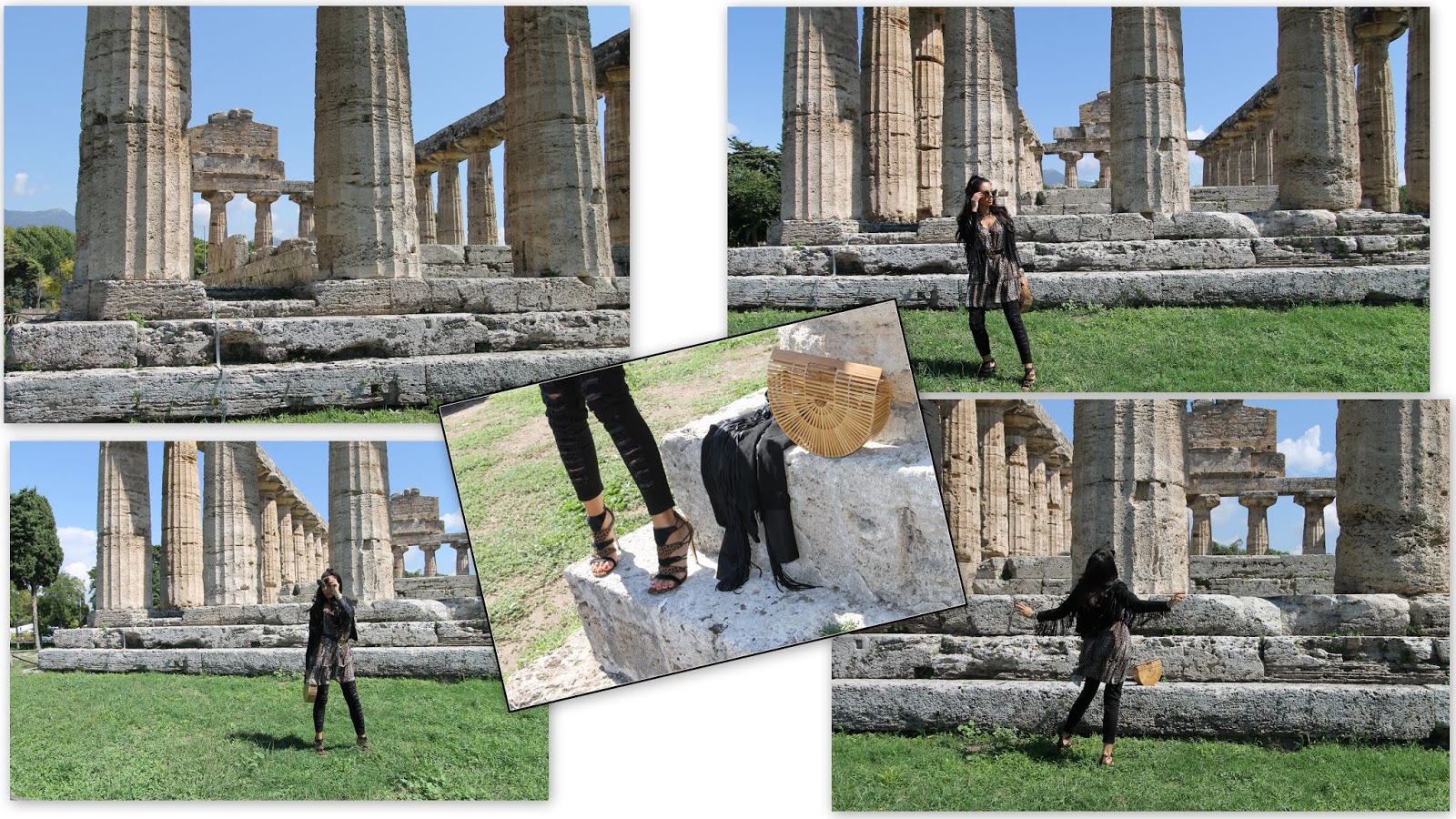
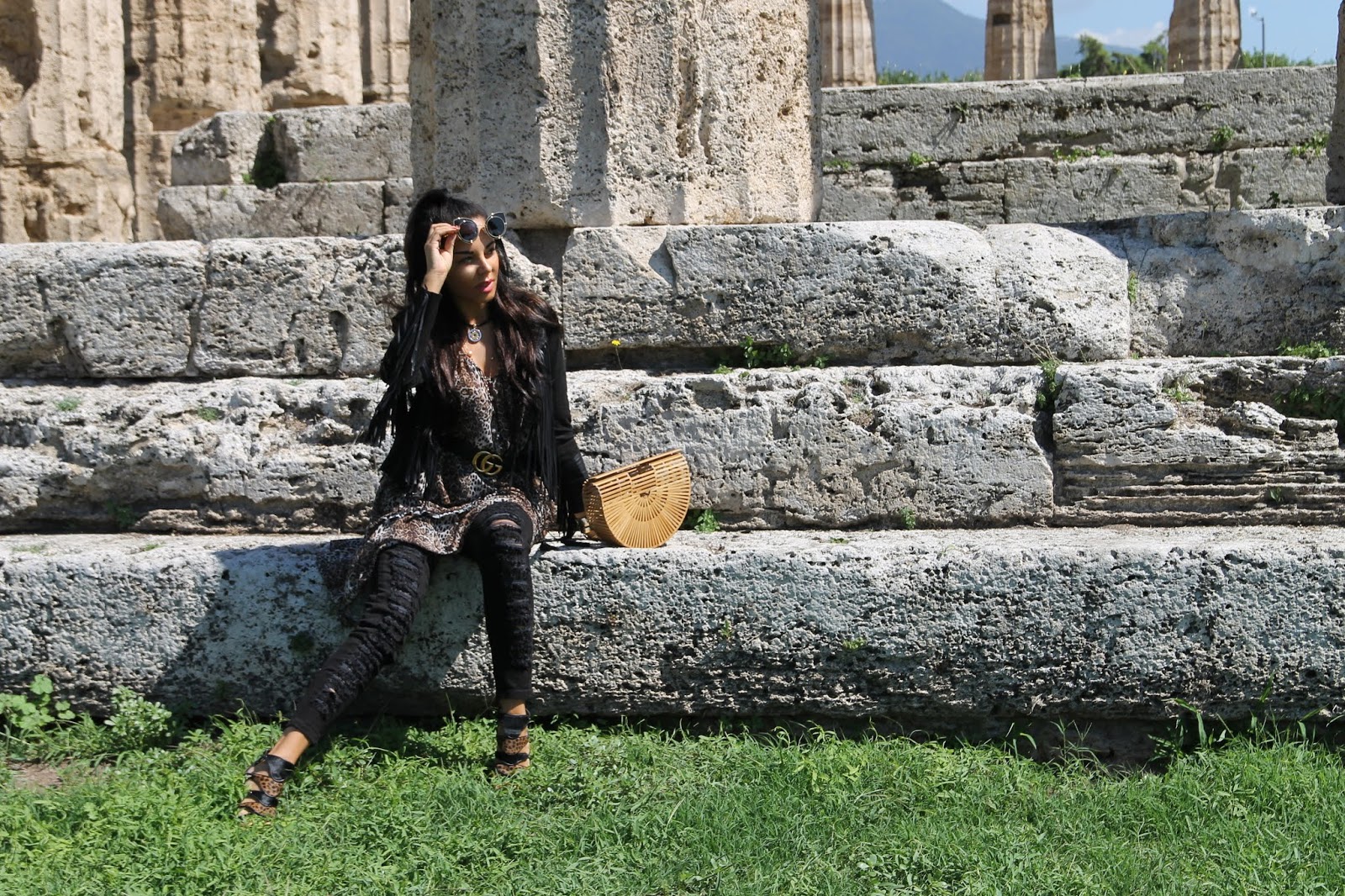
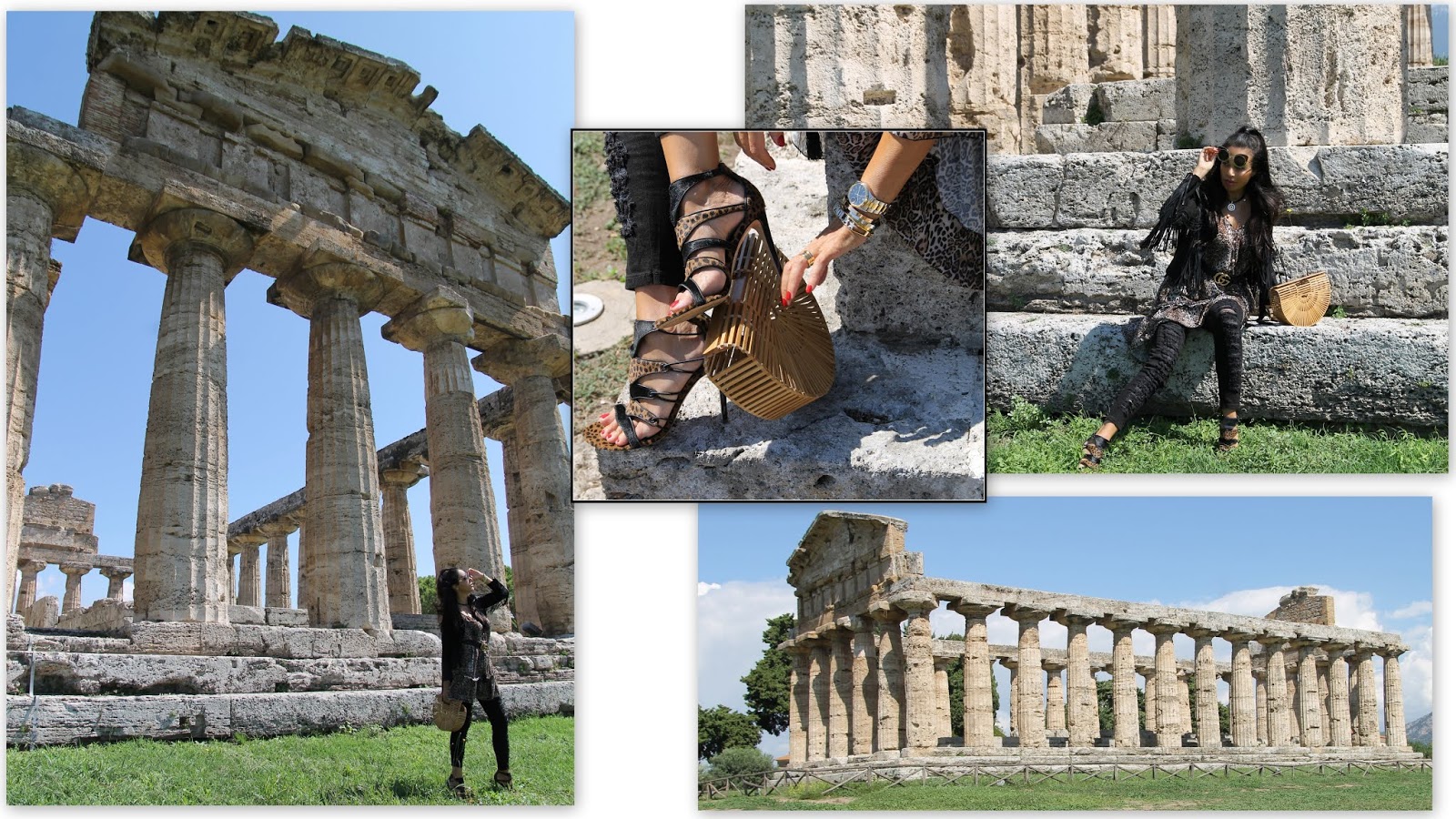
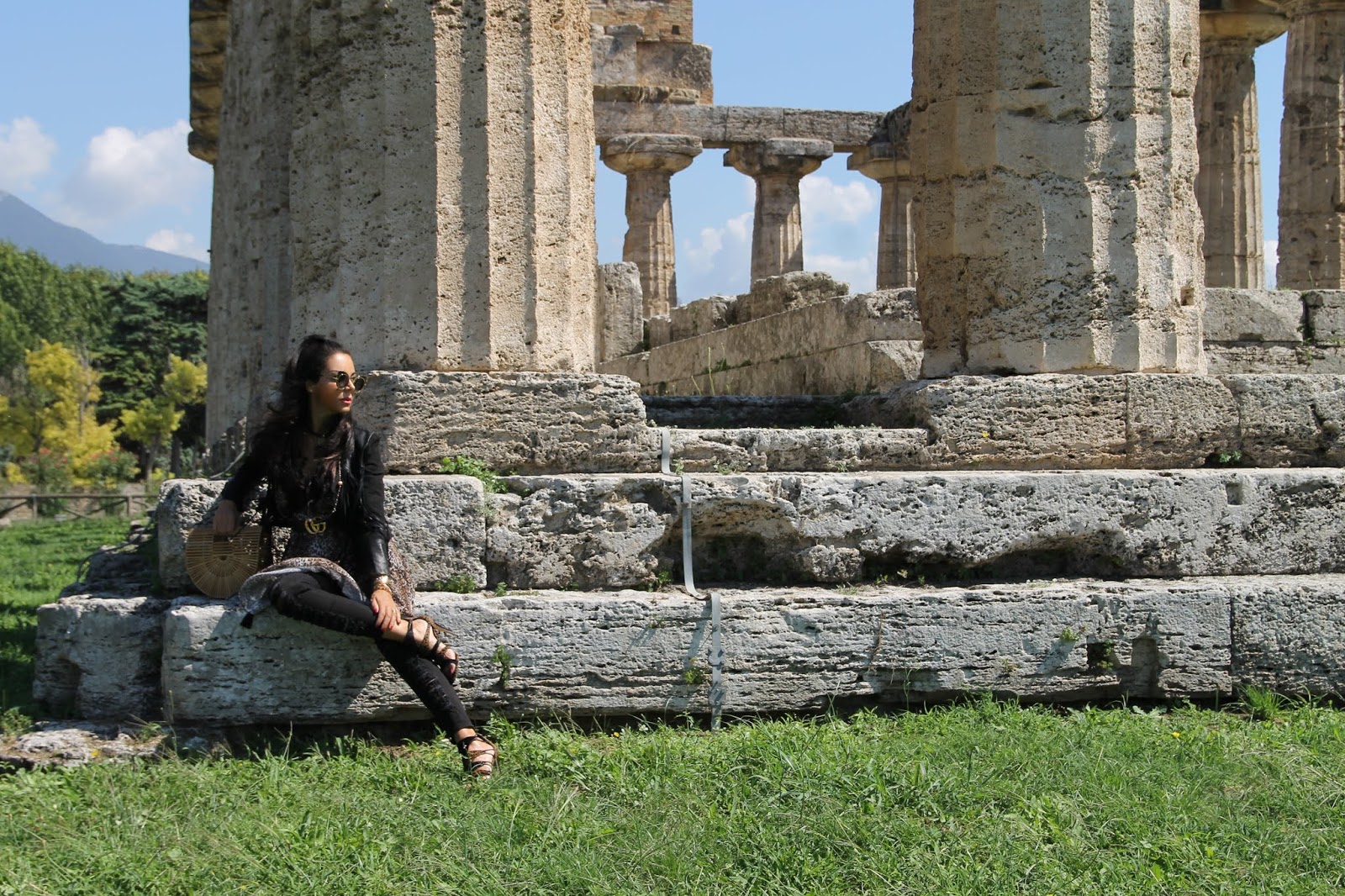


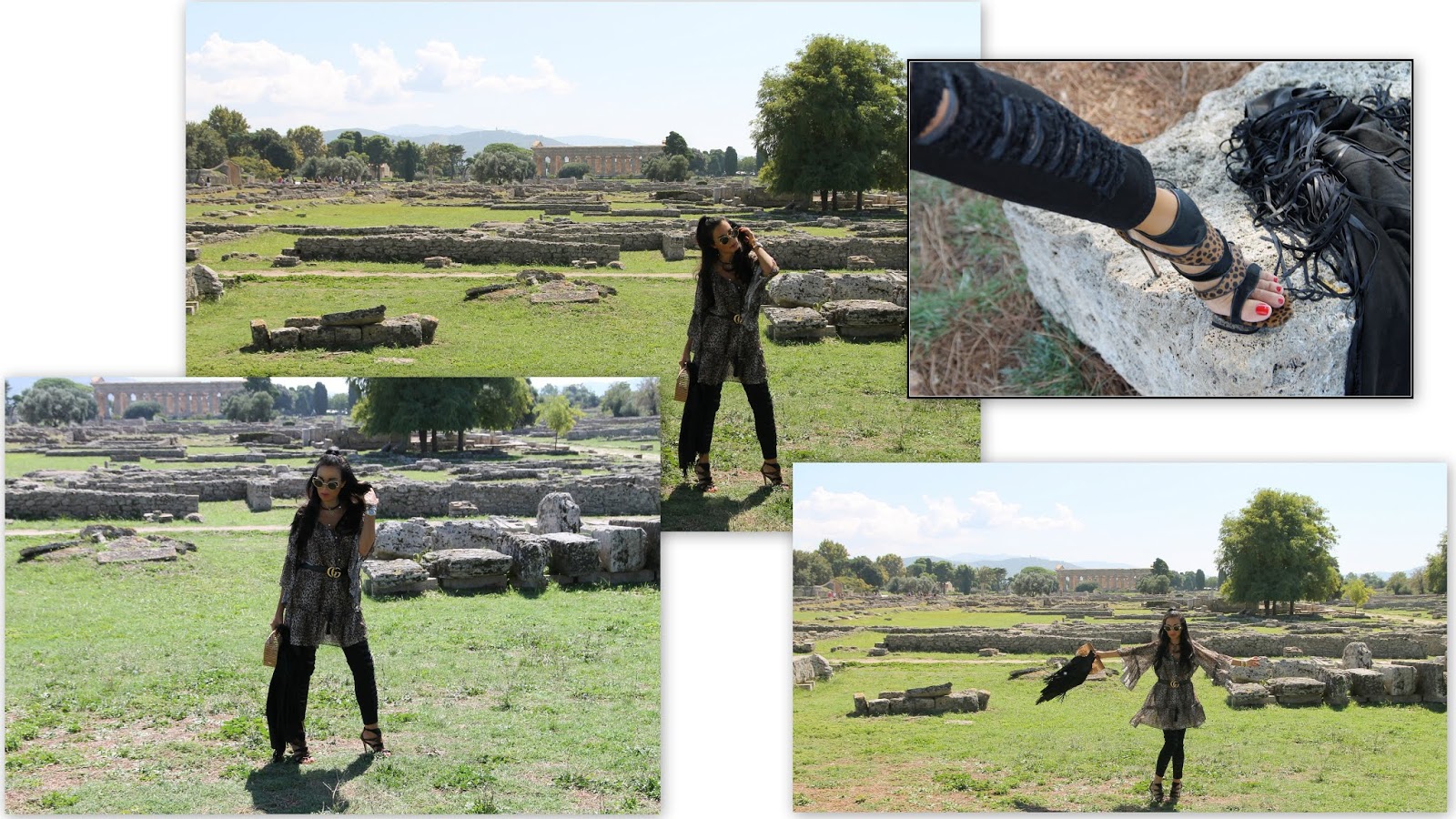

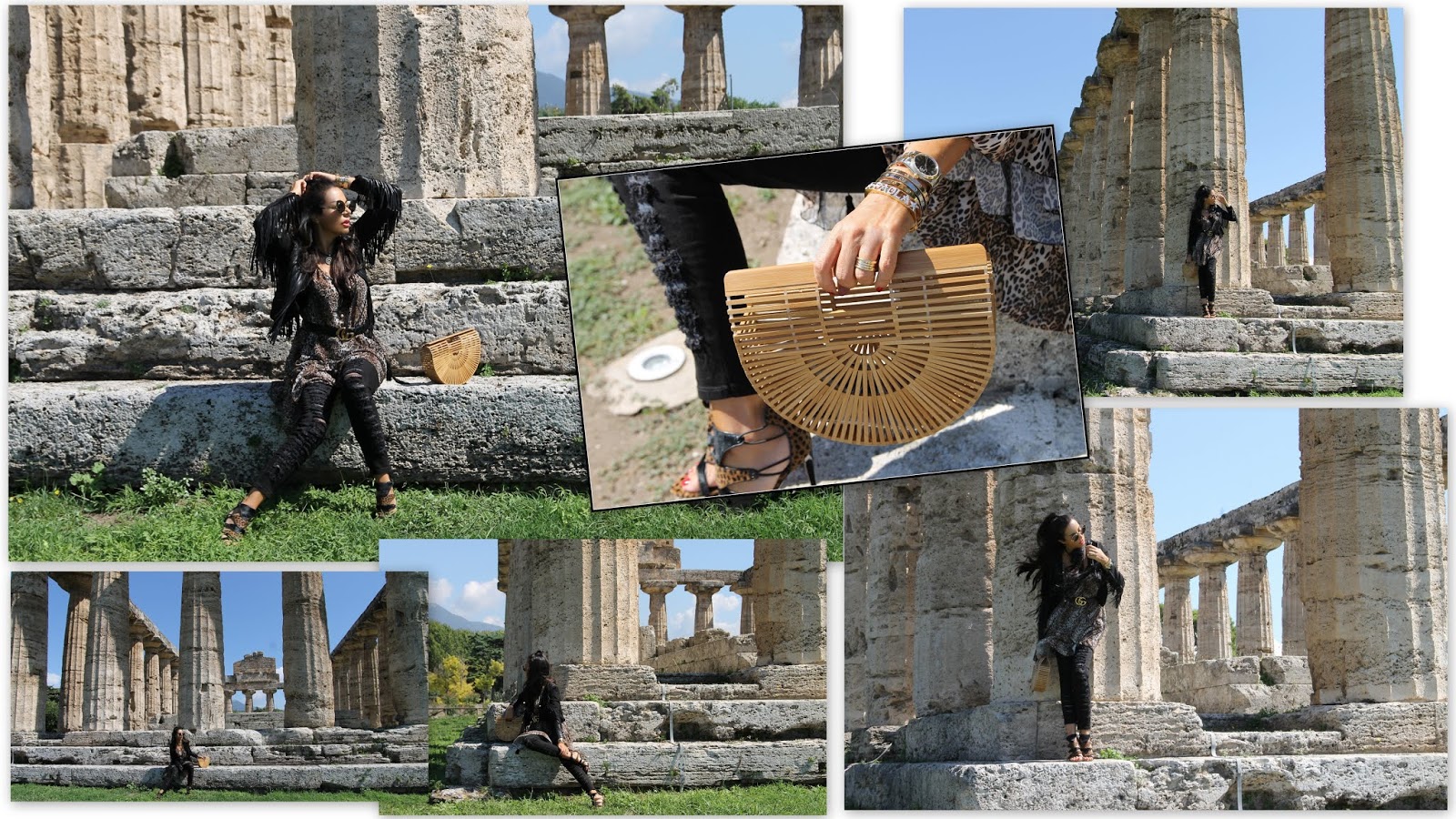
Photos: Oigres Elirab
I was wearing:
Ralph Lauren jacket
Zara dress and jeans
Gucci belt
Cult Gaia bag
Gianvito Rossi sandals



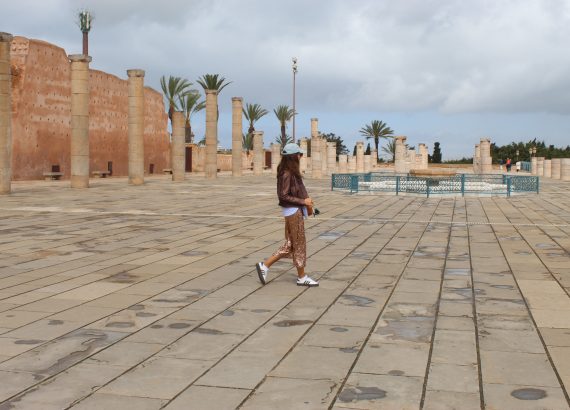
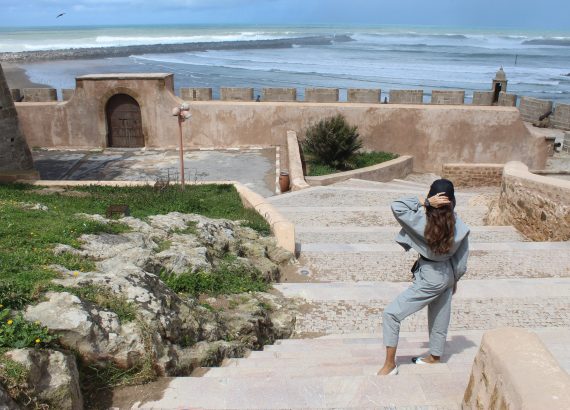
I learned something new today. I had no idea that Greek ruins existed in Italy! Looking fab Paola!
I am absolutely dying to see Greek ruins but had no idea I could do so in Italy as opposed to Greece!
Your shoe are amazing. Have a great week.
http://www.amysfashionblog.com/blog-home/
Soooo nice!! I'd love to visit there omg!
Thanks for sharing!
– Marina W
http://www.waitmarinawho.com/2018/10/labels-judgement-and-prejudice.html
This place looks really interesting and I'd love visit it! You look stunning and your heels are amazing.
xx
http://www.mybeautrip.com
Non conoscevo Paestum, ma sembra un meraviglioso sito arheologico. I Greci hanno fatti (e lasciati a noi) tanti monumenti da vedere….Che bella questa citta antica!
Mi piace molto anche il tuo outfit. Bellissime le foto!
Woow dear, amazing place, you look also amazing! :*
I wasn't really aware of the Greek ruins in Italy – they are so impressing! And your outfit is absolutely cool, dear Paola!
xx from Bavaria/Germany, Rena
http://www.dressedwithsoul.com
You look awesome as always 🙂
Amazing style! The bag and animal prints go together so well 🙂
Un parco bellissimo e pieno di storia. Splendida tu ❤️
Beautiful Outfit and accessories. You take your pictures in the most amazing places.
Have a lovely day.
super stunning pictures…
I really adore your shoes. So chic!!
Hugs!
http://missymayification.co.uk
Un posto ricco di fascino e lo è anche il tuo look 🙂
Carmy
I didn't know Greek ruins existed in Italy! Beautiful picture Paola!
Your outfit is so hot babe!!!
http://www.busyandfab.com
Look fantastico in particolare adoro l'abito e i sandali.
Nuovo post “Quale colore indossare per rallegrare le giornate autunnali?” ora su https://www.littlefairyfashion.com
I love the dress and jeans combo. This outfit is super chic and rocking!
Have a great one Paola!
http://www.fashionradi.com
The shoes are gorgeous ! Lovely photos as always.
http://www.pink-purpledots.blogspot.com
Un posto veramente magnifico, spero di arrivarci un giorno a visitarlo perché tanta storia e grandezza non si possono ignorare. Adoro molto il tuo look, mi ricorda l'estate che ci ha appena lasciati, fino a qualche giorno fa qui a Milano faceva caldo e c'era il sole, adesso c'è la pioggia. Mi piace il modo in cui usi i tuoi elementi fashion preferiti, sempre di marchio famoso per completare e stravolgere gli outfit.
Baci,
Flo
Love your style Bellisima
Love your photos and outfit!!! Your leopard print shoes are fab!! x
Yiota
https://pinkdaisyloves.blogspot.com/
Location strepitosa. quale città aveva detto di no a Gucci per la sfilata?
Lalu
Atene ha detto no a Gucci. A paestum ho fatto una delle mie sfilate più belle quando lavoravo come indossatrice: una cornice unica!!!
Buona serata, cherie.
You look super cute :)Love the bag! xoxo
Love your outfit 🙂 Place looks amazing.
Wow, this location looks like such an interesting place to explore! Also I'm loving your outfit…it is so stylish!
http://roadesque.com
conosco bene questo posto..tanta storia!ti auguro una buona giornata…kiss
https://chiaradipalma92.blogspot.com/
The photos are beautiful! I hope to go there one day! Thanks for sharing! 🙂
melissakacar.blogspot.com
Thanks for visiting Melissa!
xoxo
Stunning ❤
What a stunning spot – you always find great places for photos! And I like your leopard print outfit, the dress is so cute on you 🙂
Hope that you are having a good week and a nice start to November! 🙂
Away From The Blue Blog
buona giornata!
You are gorgeous! You took the best pictures with the ruins! I always enjoy your posts! Have a wonderful week!
-PerlaGiselle | iamperlita.com
Say hello and let’s follow each other <3 | INSTAGRAM
stupenda e location bellissima
http://www.mypowderpink.com
so cool and nice post,
thanks for sharing!!!
http://www.itzytrendy.com/2018/10/fall.html
Very informative post… nice photos
Latest article
https://www.melodyjacob.com/2018/11/will-i-ever-be-half-as-good-as-my-dad.html
Really beautiful photos from your trip and you look fabulous as always xx
Much Love
Elegant Duchess xx
https://www.elegantduchess.com/
Buon fine settimana 🙂
Carmy
I love your shoes. Kisses darling.
so trendy look my dear- love your pic – awesome heels and bag xx Have a lovely weekend xx
buona giornata!
Great post honey! really amazing 🙂
Kisses from İstanbul….
Hai un look strepitoso!!!!!!!!! Una vera bellezza!!!!
https://nettaredimiele.blogspot.com
Love.
You are looking beautiful in this dress, I love this outfit from head to toe <3
Have a nice day <3
http://www.rakhshanda-chamberofbeauty.com/
Greek ruins looks amazing. Such a gorgeous architecture. I would like to visit it. Also you looks so awesome. I really like your outfit.
Blog – http://www.exclusivebeautydiary.com
YouTube – https://www.youtube.com/watch?v=lk21o8SaptI
Thanks so much doll, happy Sunday!
Oh wow, what a lovely photo shoot in one of the coolest places in the planet! This is amazing dear. I'd love to see this place someday.
Jessica | notjessfashion.com
You really suit leopard items, and Gianvito Rossi heels are so beautiful!
Have a great week, Paola!!
akiko
What a wonderful combination of leopard print Zara dress and Gianvito Rossi shoes. The ruins are amazing too.
Great place and look!
xx LL
http://www.lalouuula.com
Thnaks so much doll!
xoxo